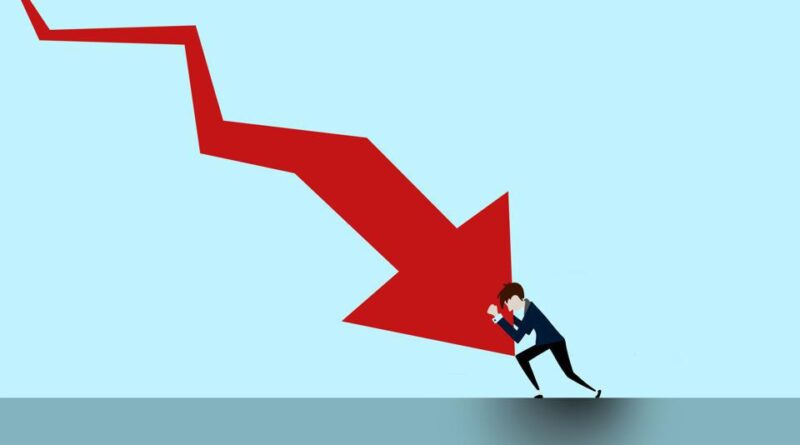Economic Recession
In the ever-evolving landscape of global economics, economic recessions stand as formidable challenges that test the resilience of nations, industries, and individuals. Characterized by a significant decline in economic activity, recessions often bring about widespread unemployment, reduced consumer spending, and a general sense of financial instability. This article aims to delve into the intricate dynamics of economic recessions, exploring their causes, impacts, and potential strategies for recovery.
Table of Contents
ToggleI. Definition and Characteristics of Economic Recession:
A. Definition:
An economic recession is commonly defined as a period of negative economic growth lasting for two consecutive quarters or more. During this time, various economic indicators, such as gross domestic product (GDP), employment rates, and industrial production, experience a significant decline.
B. Characteristics:
- Unemployment Surge: One of the hallmark features of a recession is a spike in unemployment rates as businesses cut costs and reduce their workforce to cope with declining demand.
- Contraction in GDP: Economic output, as measured by GDP, contracts during a recession. This is indicative of reduced economic activity, as both consumers and businesses curtail spending.
- Consumer Spending Decline: With uncertainty looming and job security at risk, consumers tend to cut back on discretionary spending, impacting businesses across various sectors.
- Decline in Business Investment: Companies often scale back on investments during a recession, leading to a slowdown in capital expenditure and innovation.
II. Causes of Economic Recessions:
A. External Shocks:
- Global Financial Crises: Events such as the 2008 financial crisis demonstrated how interconnected global financial markets are. A crisis in one region can quickly spill over to affect economies worldwide.
- Natural Disasters: Hurricanes, earthquakes, and other natural disasters can disrupt supply chains, damage infrastructure, and lead to economic downturns.
B. Internal Factors:
- Monetary Policy: Central banks play a crucial role in managing economic stability. Mismanagement of interest rates and money supply can contribute to overheating or contraction in the economy.
- Fiscal Policy: Government spending and taxation policies influence economic activity. A sudden shift towards austerity measures can exacerbate a recession.
- Financial Bubbles: The bursting of speculative bubbles, such as the dot-com bubble in the early 2000s, can trigger recessions by causing widespread financial instability.
III. Impacts of Economic Recession:
A. Unemployment and Income Inequality:
- Job Losses: Unemployment rates soar as businesses cut jobs to cope with reduced demand and declining profits.
- Income Inequality: Recessions often exacerbate existing income inequalities, disproportionately affecting vulnerable populations.
B. Financial Market Volatility:
- Stock Market Decline: Investors tend to react to economic uncertainty by selling off stocks, leading to sharp declines in stock markets.
- Credit Crunch: Banks may become more risk-averse during a recession, leading to a tightening of credit markets and reduced access to loans for businesses and individuals.
C. Consumer Behavior:
- Reduced Spending: Consumers, fearing job losses and economic uncertainty, cut back on spending, leading to a decline in retail and service sectors.
- Changing Preferences: Recessions can reshape consumer preferences, with a focus on essential goods and cost-effective options.
IV. Recovery Strategies:
A. Monetary Policy:
- Interest Rate Adjustments: Central banks can employ monetary tools, such as lowering interest rates, to stimulate borrowing and spending.
- Quantitative Easing: Central banks can inject liquidity into the financial system by purchasing financial assets, aiming to lower long-term interest rates.
B. Fiscal Policy:
- Government Spending: Governments can implement stimulus packages, increasing spending on infrastructure, healthcare, and social programs to stimulate economic activity.
- Tax Incentives: Tax cuts for individuals and businesses can incentivize spending and investment, promoting economic recovery.
C. Structural Reforms:
- Labor Market Reforms: Policies that enhance labor market flexibility and reduce barriers to employment can expedite job creation.
- Regulatory Changes: Streamlining regulations and fostering a business-friendly environment can encourage investment and entrepreneurship.
D. International Cooperation:
- Coordination of Policies: In a globalized world, coordinated efforts among nations can enhance the effectiveness of economic recovery measures.
- Trade Policies: Open and fair trade policies can contribute to global economic stability, preventing the spread of recessions across borders.
V. Case Studies:
A. The Great Depression:
- Causes and Impact: The Great Depression of the 1930s was triggered by the collapse of the stock market, leading to widespread unemployment and economic hardship.
- Recovery Measures: Franklin D. Roosevelt’s New Deal, a series of economic programs, aimed to stimulate the economy through government intervention and public works projects.
B. The 2008 Financial Crisis:
- Causes and Impact: The collapse of the housing market and financial institutions triggered a global recession, leading to widespread job losses and financial instability.
- Recovery Measures: Central banks worldwide implemented unconventional monetary policies, and governments enacted stimulus packages to stabilize the economy.
VI. Conclusion:
Economic recessions are inevitable in the cyclical nature of economies, and understanding their dynamics is crucial for effective policymaking and mitigation of their impacts. Governments, central banks, and international institutions must work collaboratively to implement proactive measures that foster economic resilience, job creation, and sustainable growth. As history has shown, well-crafted recovery strategies can pave the way for a stronger and more resilient economic future.
